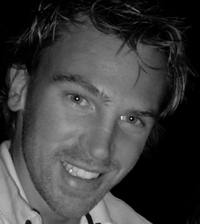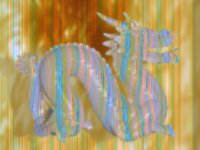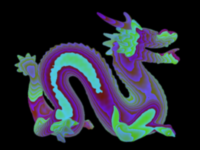
Dr.-Ing. Christoph Schmalz
Alumnus of the Pattern Recognition Lab of the Friedrich-Alexander-Universität Erlangen-Nürnberg
Single Shot Structured Light
There are many established techniques for optical 3D surface measurements. Almost all of them need several images of a scene to reconstruct the depth. In contrast, Single Shot methods need only one image. This offers the following advantages:
- No artifacts from motion
- can work with dynamic scenes
- can work in handheld devices
- Low hardware complexity
- leads to light, rugged an inexpensive sensors
- scalable from mm to meter range
In collaboration with Siemens AG , we aim to build a robust all-purpose 3D scanning system. The sensor works with almost any surface type, including highly textured objects, and under adverse environment conditions. Typical performance figures are:
- Depth resolution 1/1000th of the working distance
- 105 data points per frame
- Frame rate 20 Hz
The following table shows some example input images and the resulting color coded depthmaps.
 |  |
|---|---|
 |  |
 |  |
Structured Light Test Scenes
Structured Light is a method to generate 3d data from one or more images of an object illuminated with a special pattern. In contrast to stereo methods it is difficult to compare different algorithms as everyone uses different patterns.
This project aims to remedy that situation. Here you can find ![]() scripts for povray to generate images of synthetic test scenes with ground truth. To keep the download small the archive does not include the big data files, they must be downloaded separately. See the code for links.
scripts for povray to generate images of synthetic test scenes with ground truth. To keep the download small the archive does not include the big data files, they must be downloaded separately. See the code for links.
There are some hints about the workflow in ![]() this document, especially concerning the calibration data of the virtual Structured Light sensor. Here you can see an example image under illumination by a stripe pattern and the corresponding color coded ground truth depthmap.
this document, especially concerning the calibration data of the virtual Structured Light sensor. Here you can see an example image under illumination by a stripe pattern and the corresponding color coded ground truth depthmap.
 |  |
If you want to take part in the survey, please contact me. If you do not want to get involved with the rendering, you can provide a bitmap of your pattern and I will do the rest.
The results of different algorithms on standard scenes will be posted here as soon as they become available.




